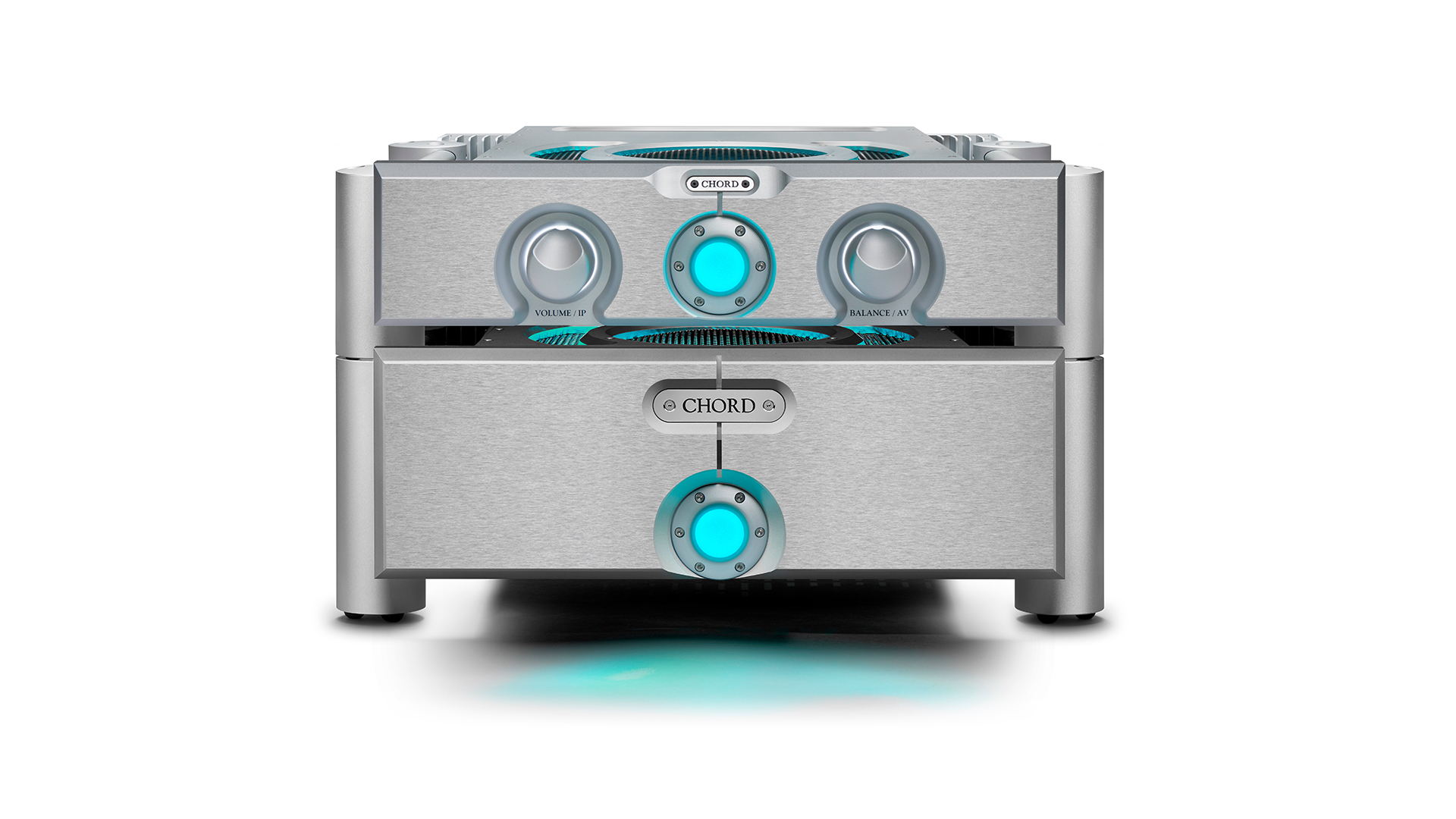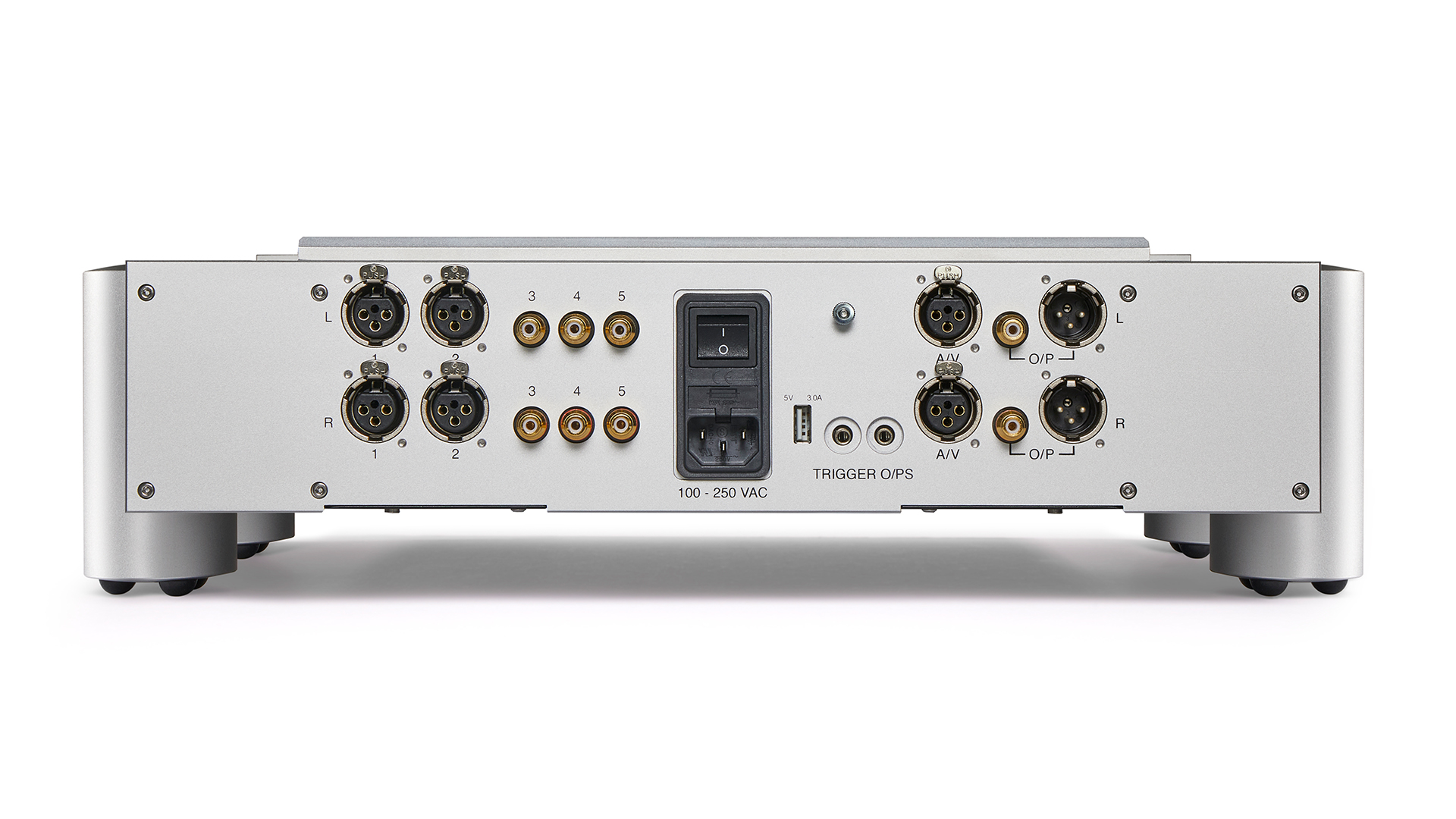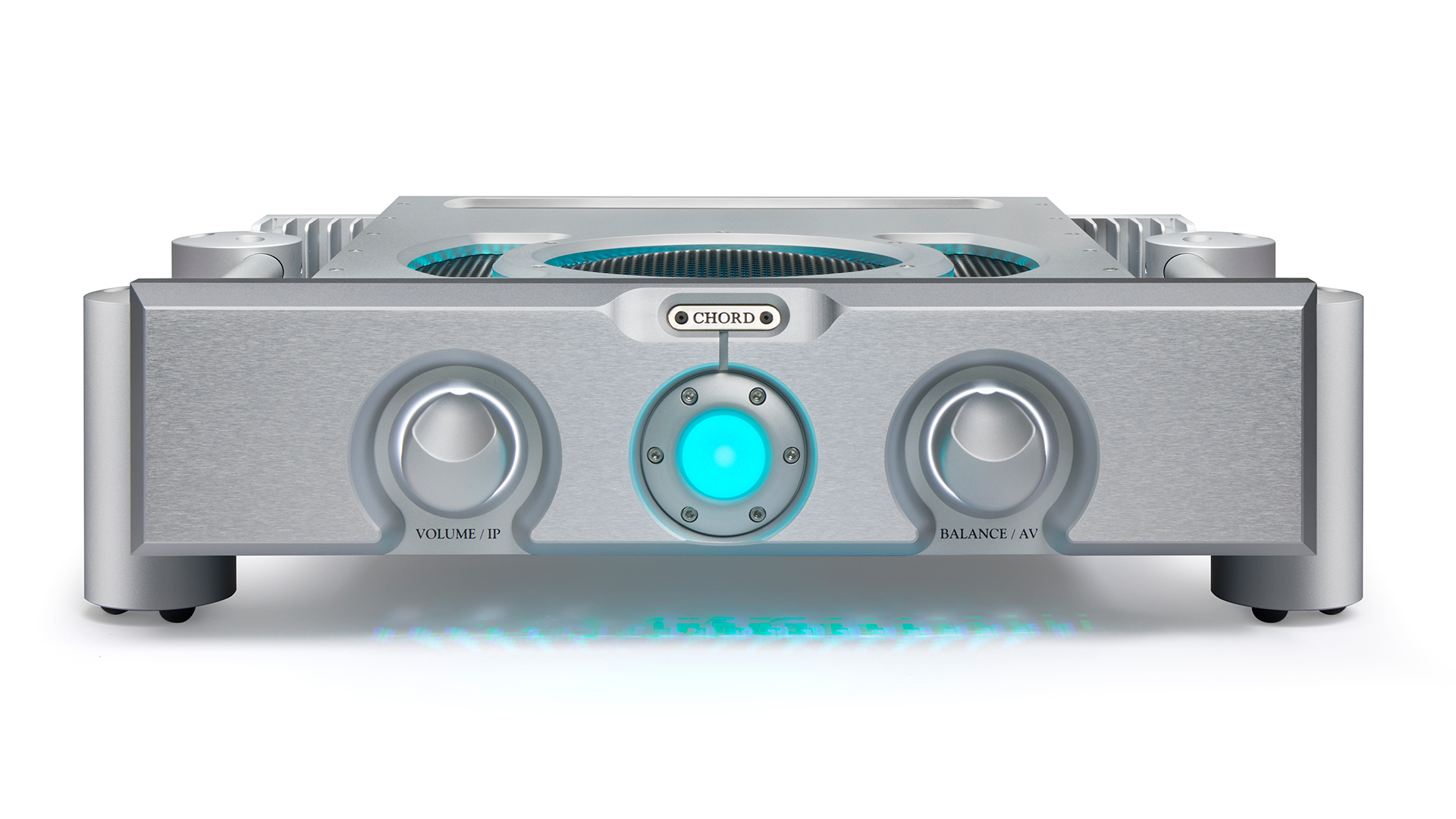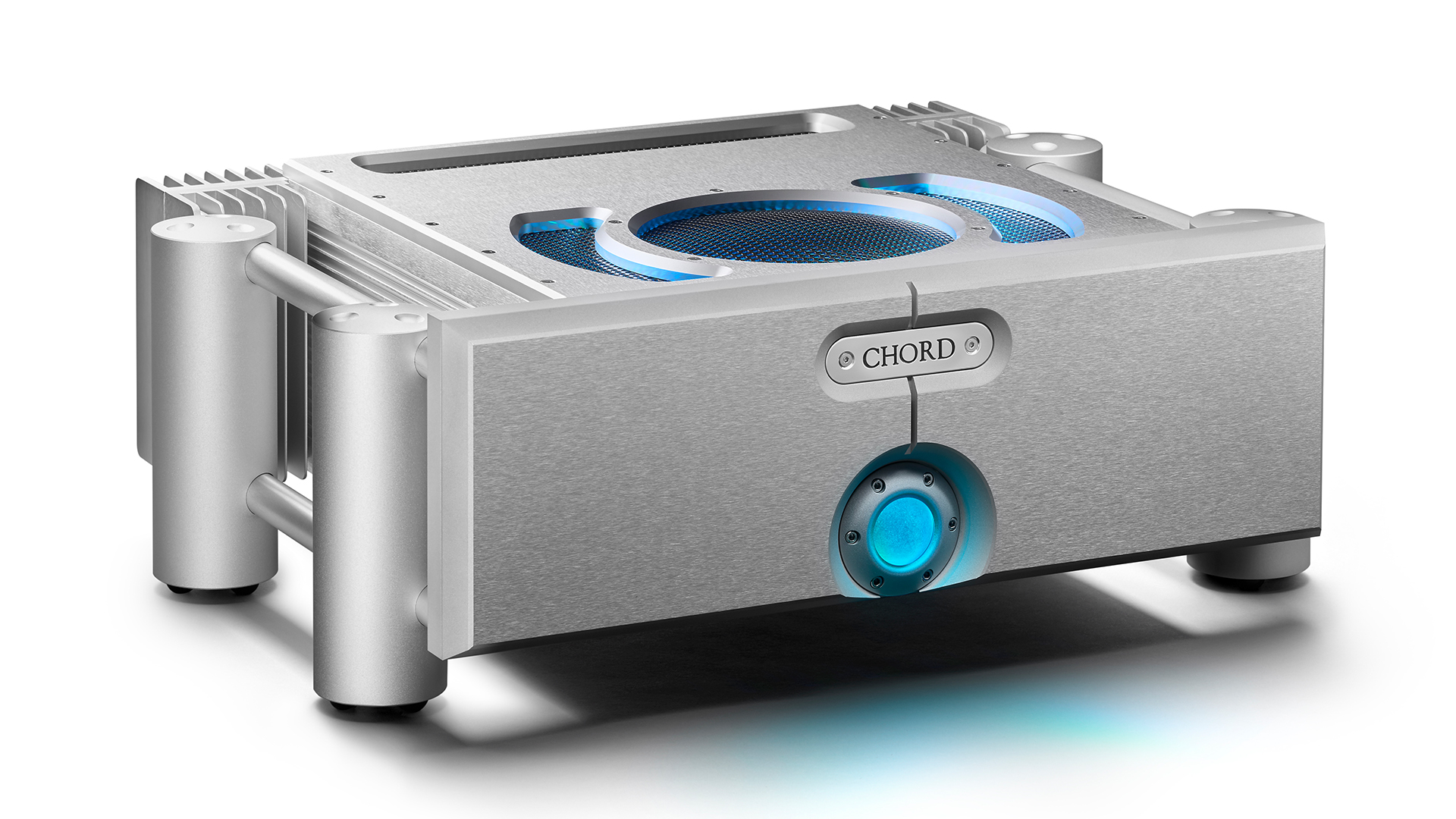What Hi-Fi? Verdict
Chord’s Ultima Pre 3/Ultima 6 pre/power combination leads the class when it comes to clarity and insight
Pros
- +
Impressive detail resolution
- +
Sonic precision
- +
Outstanding clarity and insight
- +
Astonishing speed
Cons
- -
Preamp’s controls could work more slickly
- -
Cheap-feeling remote
Why you can trust What Hi-Fi?
There’s something serious stirring at Chord Electronics HQ. After years of delivering class leading digital products, we’re seeing the company revisit its core analogue components and, in quite short order, revamping almost the entire range. This isn’t some slight tweaking to give sales a little boost, but a more thorough rethink that has resulted in significant performance upgrades to the brand’s analogue amplifiers.
The new Ultima Pre 3/Ultima 6 is the company’s starter full-size stereo pre/power pairing, and is an excellent example of the qualities the new designs offer.
Build

The Ultima Pre 3 (£6000 / $8945 / AU$10,440) is a pure line-level device with five standard inputs, two of which are balanced XLRs. If you’re looking for a built-in phono stage or a digital-to-analogue converter you won’t find them here. There isn’t even a headphone output to allow for personal listening, which is probably more of a loss from our point of view. So, if you want to play vinyl or have a digital source you’ll need the appropriate extra boxes. We’re sure that Chord will be only too happy to sell them to you.
Unusually for a product of this type, there is a 3A / 5 Volt USB type A power output on the back panel. Note, it is for power only and doesn’t handle signal transfers. This is a handy touch that can be used to feed external products such as Chord’s own Hugo 2 or Qutest DACs, for example.
The Ultima 6 power amplifier (£7000 / $9925 / AU$12700) is even simpler, with just the option of balanced and single-ended inputs and a chunky set of speaker outputs to grab the attention. It’s a powerful unit though, despite its relatively compact dimensions, and outputs a claimed 180-watts per channel.

Type Preamplifier/power amplifier
Analogue inputs Balanced XLR x 2, stereo RCA x 3, stereo AV input
Analogue outputs Balanced XLR, stereo RCA
Phono stage? No
DAC? No
Headphone output? No
Remote? Yes
Power output 180 watts per channel
So far so relatively conventional for products of this type. Take a look inside and the story changes. One of the cornerstones of Chord’s electronic designs has always been the use of ultra-high frequency power supplies in its products, rather than the usual big transformer/large smoothing capacitor configuration used by most rivals. Not only does the efficiency of such a power supply allow Chord to make more compact and physically lighter products, but the company also claims sonic advantages in terms of distortion, responsiveness and stability.
Both the Pre 3 and Ultima 6 use these kinds of power supplies, tailored for their specific requirements. The preamp’s circuitry isn’t just a tweaked carry-over from the previous generation of Chord products, but rather takes a fresh look at the task and approaches it with all the technical advancements and experience gained over the company’s three decades-worth of manufacturing.
The latest hi-fi, home cinema and tech news, reviews, buying advice and deals, direct to your inbox.
Features

There’s particular care taken over the way the input signal is buffered to reduce radio frequency interference and a great deal of attention given to maintaining its integrity as it flows through the audio circuitry.
The Ultima 6 power amplifier uses a clever dual feed-forward amplifier topology that has been implemented in all the company’s recent high-end power amplifier designs. Here it is used with sophisticated drive circuitry feeding no less than 32 proprietary MOSFET power devices to deliver that healthy output figure. The brand claims the electronic design gives benefits across the board from very low distortion figures to wide ranging dynamics.
Chord has developed such a distinctive aesthetic over the years that this pairing couldn’t belong to any other manufacturer. Look past the bulk provided by the rather extravagant quartet of outboard aluminium cylinder legs (that support each unit) and you’ll see that both are surprisingly compact for products of their type. That’s largely down to the small electronic footprint of those unusual high frequency power supplies.

These wouldn’t be Chord products if there weren’t some sort of light show on offer, and we’re not disappointed. Both units have large orbs in the centre of their front panels that are in fact, the power buttons. These glow green on initial power-up and then turn to blue once the units stabilise. It doesn’t end there, the Pre 3 preamp has an LED ring around the volume control to indicate the input chosen; red for input 1, yellow for input 2 and so on. Initially, we find ourselves going back to the user manual to identify which of the five inputs is selected, but after a while it ceases to be an issue.
On a conventional design you would expect the other control dial to be the input selector, right? But here, it is in fact the balance control. You toggle through the inputs by pushing in the volume control, while doing the same to the balance dial selects the AV input. The AV input – another balanced XLR – bypasses the Pre 3’s volume control and feeds the full strength signal straight into the power amplifier. Make sure that anything you connect to this input has the means to control volume or you’ll probably be shopping for some speakers soon after.
General build quality is excellent. Both units feel immensely well made with thick aluminium panels and a high standard of fit and finish. In short, these are expensive items and they certainly exude a luxury aura. They look equally good in both the silver and black finish options. Things aren’t quite perfect though.
While we have no issue with selecting an input by pressing in the volume control, we have to say that the feel of both the volume and balance controls when we press them in is clunky and imprecise, and out of keeping with the well-engineered overall feel of both products. It doesn’t help that both controls wobble notably too; Chord should really look at tightening the tolerances in this respect.
Of course, most people will use the remote handset instead. This is a fairly complex system remote, so has a whole lot of buttons owners may not use. But that’s not the issue for us. We think it feels cheap and is disappointing for a product of this type. That said, it works well enough.
Amplification at this level demands a suitably talented system. Our sources are the Naim ND555/555 PS DR music streamer and a Technics SL-1000R/Kiseki Purpleheart/Cyrus Phono Signature/PSX-R2 record playing combo. At the other end of the system we have ATC’s SCM 50 alongside the excellent R6 Arreté floorstanders from Audiovector. The system is wired with premium offerings from Vertere and Chord cables.
Sound

This Chord amplifier pairing sounds a bit opaque and bland on initial listening, but gains in clarity and expression over the next week or so of use. While Chord’s amplifiers have invariably been detail retrievers of a high order, they haven’t always been as successful when it comes to musical engagement. We’ve noticed a real improvement with the company’s latest designs. The ones we’ve reviewed have kept all the clarity, precision and speed of previous generations but now combine that with a more natural sounding fluidity and dynamic finesse. There’s a greater sense of tonal richness, where previously things sounded a little bleached and grey.
Let’s make things clear though. The Ultima Pre 3/Ultima 6 combination is still a highly analytical beast. It allows the listener to dissect a recording if they desire and dig deeply into the foundation of its production. When we listen to Arvo Pärt’s Tabula Rasa we’re acutely aware of the recording venue’s acoustics and the way the musicians fit into that space. We hear low level reverb sounds that we haven’t really noticed before, and marvel at the way this Chord combination uncovers so much information, so effortlessly.
It doesn’t lean on having a thin or bright presentation to highlight all that detail either. This Chord pairing is impressively neutral and even-handed. It sounds more rounded than the company’s older generation products, displaying a pleasing level of natural warmth and weight. This is still far from being an easy-going, relaxing performer though, and that’s just fine with us given that this pairing sounds immensely fast and is capable of almost startling levels of punch and attack when the music demands.
There’s a fine sense of scale here too, thanks to an expansive, open and beautifully stable soundstage and the ability to deliver huge dynamic swings when the music demands. Old favourites such as The Battle from the Gladiator OST come through with verve, and at high levels manage to pin us back in our seat with the energy on show. Pleasingly, there’s class-leading composure and little sign of strain even when we push very hard. Even dynamic contrasts are maintained long after most alternatives begin to sound compressed.
We also like the way this amplifier combination renders the bass. Lows are punchy, powerful and immensely taut. It can track rapid changes with ease and reveals plenty of textural detail where it exists. This works as well with Massive Attack’s Heligoland set as it does the typically bombastic Hans Zimmer soundtrack.
Listening to Massive Attack’s Atlas Air track shows that these Chords are good though not class-leading when it comes to communicating the music’s momentum. The combo sounds surefooted rather than overtly exciting. Instead, our attention is drawn to the effortless way this pairing steps out of the way and lets us focus on the music. Their presentation may be supremely insightful but it doesn’t try to highlight that fact in some kind of showy ‘look at me’ way. We also love the midrange clarity and focus with voices, and the way each sound element is given space to breathe even when the mix becomes complicated.
Our time with the Ultima Pre 3/ Ultima 6 is something of a blur as we go through a wide range of recordings, both old and new. Each time we play a different artist we find ourselves admiring the Chord’s transparency in showing up the differences in recording techniques over the years from the bare boned basic stereo of the early Beatles recordings to the sophistication of Quincy Jones at the height of his powers on Back On The Block.
Verdict

There’s no shortage of talented alternatives at this level, but we think this Chord Ultima Pre 3/Ultima 6 pairing is closer than most to being an ‘all things to all people’ amplification solution. Take care to partner with suitably talented and sympathetic partnering equipment and it’ll sing.
- Sound 5
- Build 4
- Features 3
Read our review of the Luxman C-700u/M-700u
Also consider the McIntosh MA8950
Best stereo amplifiers: the best integrated amps you can buy
What Hi-Fi?, founded in 1976, is the world's leading independent guide to buying and owning hi-fi and home entertainment products. Our comprehensive tests help you buy the very best for your money, with our advice sections giving you step-by-step information on how to get even more from your music and movies. Everything is tested by our dedicated team of in-house reviewers in our custom-built test rooms in London, Reading and Bath. Our coveted five-star rating and Awards are recognised all over the world as the ultimate seal of approval, so you can buy with absolute confidence.

